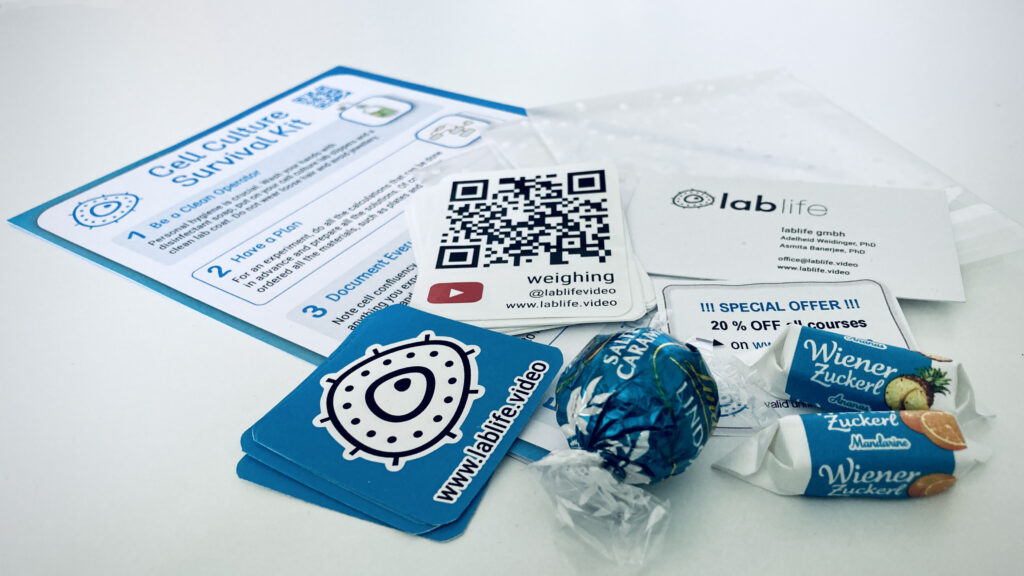Preparing lablife Goodie Bags 🍭🍬🍫

👉👉👉 for the Advanced Cell Culture Workshop 2025 by ÖGMBT!
Apart from sweets 🍬, you will find stickers and the freshly printed lablife Cell Culture Survival Kit ⛺ in your goodie bag! 👈😁👍
Can’t wait to present at the #AdvancedCellCultureWorkshop2025 at #BOKU Vienna hosted by ÖGMBT – Austrian Association of Molecular Life Sciences and Biotechnology – Working Group Cell Based Assays, Therapies and Products! 😊
Here, the evolving landscapes of cell culture, advancing technologies and future prospects in cell […]
Christian Doppler – A Visionary Scientist ☁️☁️☁️

Christian Doppler, an Austrian mathematician, physicist and astronomer was born in this house in Salzburg. 👉🏡
He is said to have once said: “The most rewarding research is that which not only pleases the thinker, but also benefits humanity.” 🤗❤️
Christian Doppler had no idea how much this would prove true for his own research! He discovered that the frequency of waves shift when the position of the source and the receiver changes. 💫
Almost everything in our modern lives is in […]
Friendly Gestures in the Cell Culture Lab 💙💙💙

The cell culture lab, if you adhere to Good Cell Culture Practice, can come across like a cold and hostile place. Don’t share your reagents ❌, don’t share the hood ❌, don’t shove around other people’s plates in the incubator ❌, don’t talk, don’t sing ❌, don’t hang around, when you are done ❌, don’t do this ❌, don’t do that ❌.
But actually, by applying these practices, we do not only protect our own work, but also […]
lablife on Stage at EdTech Austria Summit 2025 🚀🚀🚀

Asmita Banerjee from the team of lablife.video presented learnings and experiences at EdTech Austria Summit 2025.
6×5 minutes learnings was a fun format and also a great opportunity to learn from others working with #educational #technology (lörn, Hacker School Austria, eSquirrel, Knowledge Markets, Polycular).
👉 The main learnings of the session 👈
🌸 Development and implementation of new technologies must go hand in hand, otherwise things may go wrong.
🌸 Some lead the way with a pioneering spirit, others could […]
On the Road again – this time heading towards Salzburg! 👉👉👉

On the Road again – this time heading towards Salzburg! 👉👉👉
EdTech Summit – we are coming!!! 🙋🏻♀️🙋🏻♀️
Curious about what Austria’s largest #education #technology EdTech Austria platform has to offer?
Stay tuned – we will soon tell you about what to learn from the EdTech Summit 2025 taking place in beautiful #Salzburg, Austria! 🎼🎹🎼
The Manifestation of an Idea – with Bernhard Kerres 🧡

Not sure if lablife.video would even exist without Bernhard Kerres.
In late spring, in 2018, we went to an event of the LBG Career Center. In a relaxed setting we could talk to experts about (#business) #ideas and how to turn an impactful idea into reality. At this point, we were not even sure what to do with our idea 🌱. Was it even worth putting it into reality?
This is where we met Bernhard Kerres.
“Shall we ask him?”
“Forget it, […]